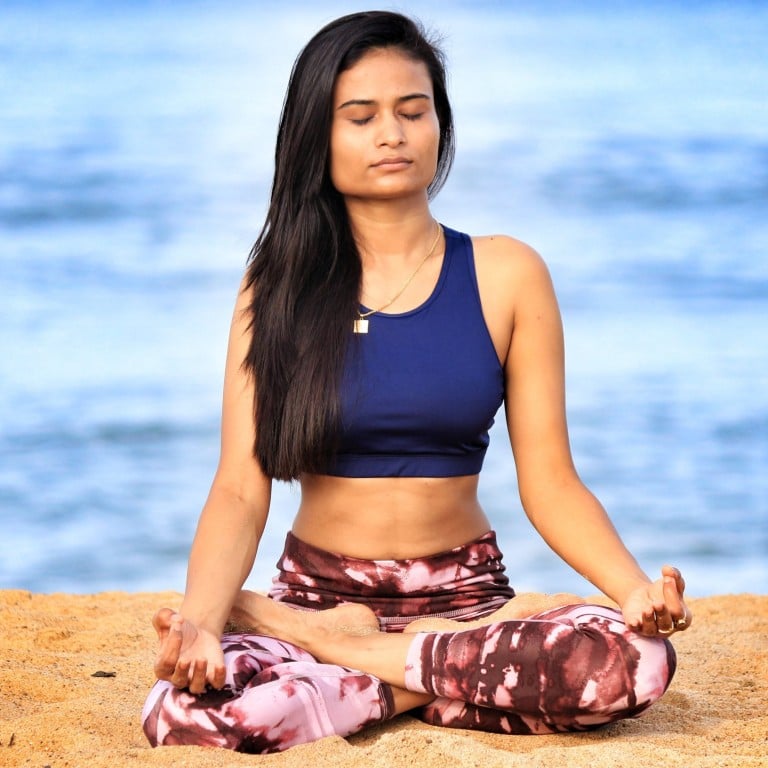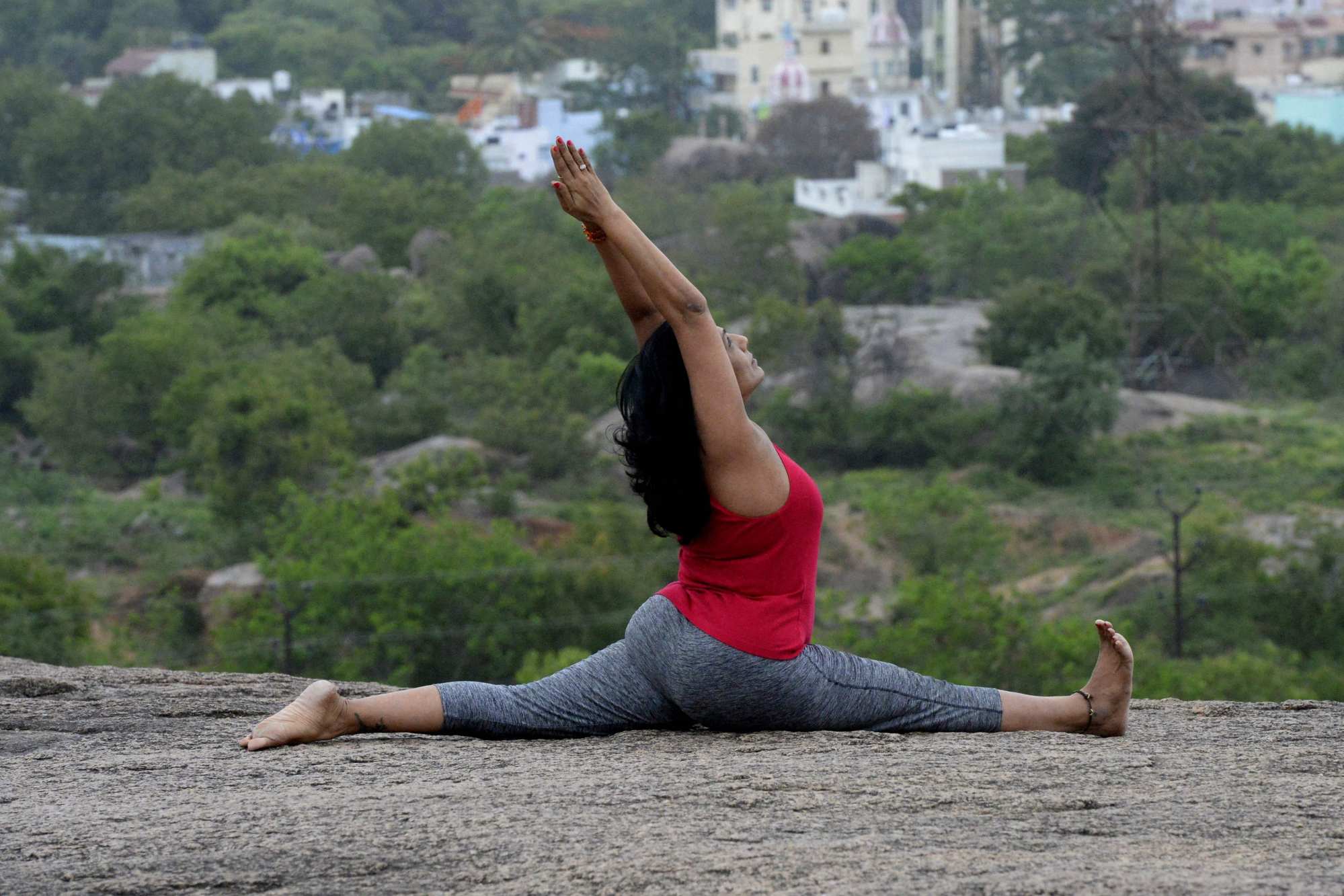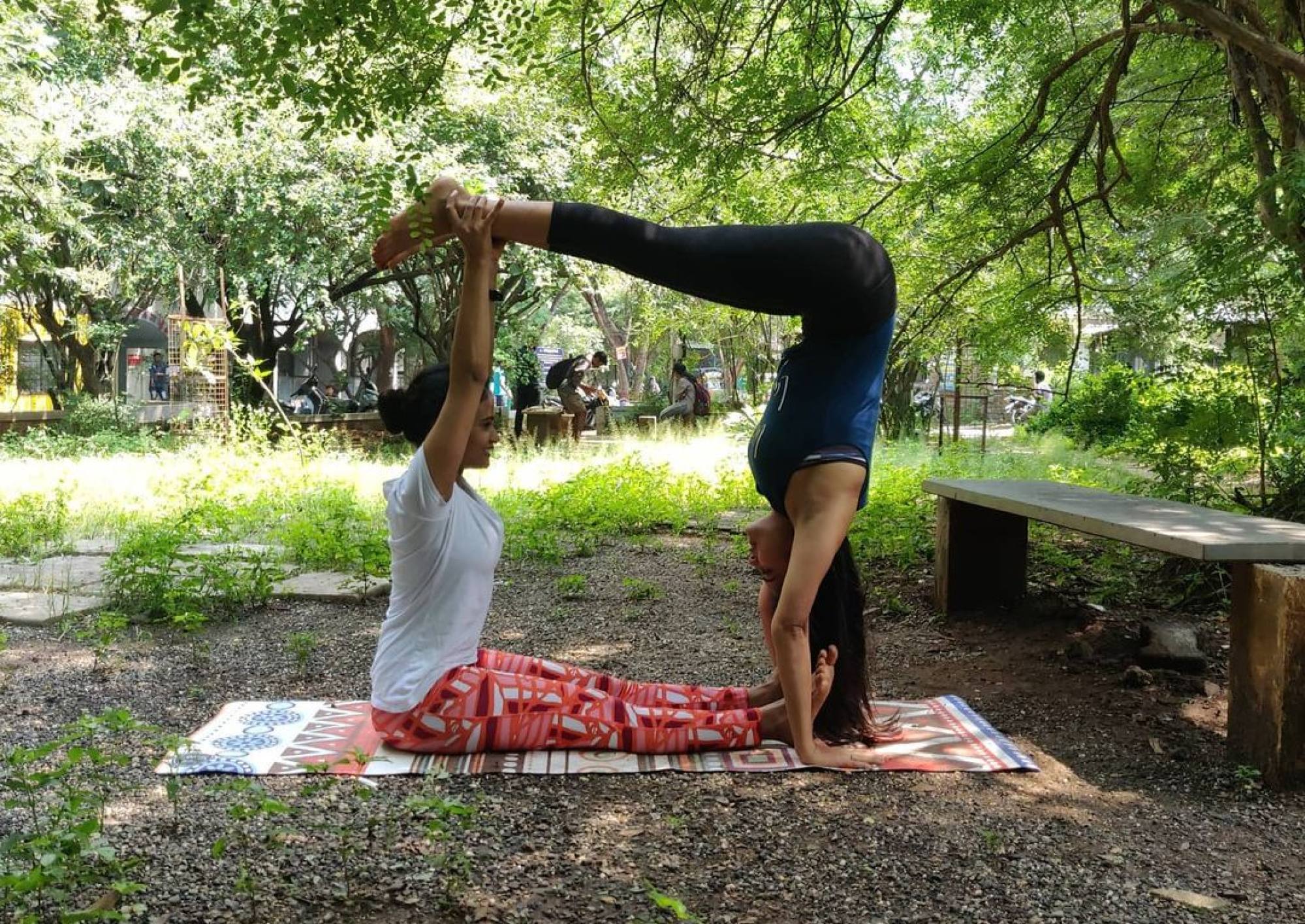
Indian millennials take to online yoga as home fitness booms during Covid-19
- With gyms shut during lockdowns, instructors have moved their classes online, joining many ‘yogafluencers’ in the burgeoning virtual yoga scene
- The 5,000-year-old practice is so important to India, it has its own ministry tasked with promoting the research, education and popularity of yoga
Every year around International Yoga Day on June 21, Indians commemorate the 5,000-year-old practice in the digital age by flocking to live-streamed Facebook classes, virtual boot camps helmed by Bollywood celebrities and online sessions featuring world-renowned spiritual gurus.
According to a global survey by US consumer electronics and fitness company Fitbit, yoga has witnessed a 241 per cent spike among Fitbit users during the pandemic. And in the Indian market, US$16 billion was pumped into yoga classes and accessories last year, according to an industry survey, an uptick from US$10 billion in 2018.

The trend gave Shishir Parekh confidence in becoming a virtual yoga instructor after losing his job as a marketing professional in June last year.
“Over the last two decades, home gyms have become a thing,” said the 43-year-old yogi based in New Delhi. “And now fitness has taken on a new avatar since the Covid-19 pandemic with a spurt in online yoga and apps.”
The virtual trend has spawned the term “yogafluencers” – or yoga influencers – as entrepreneurs roll out customised options for fitness seekers.
Teaching yoga in Bali has never been more popular – or harder to do
Sarvesh Shashi, a 27-year-old influencer who is known as “India’s millionaire guru”, is among these new age yogis who has found a massive following on social media.
“Just like test cricket became T-20, we’re trying to make yoga more fun and cool for the millennials,” said Shashi, referring to a shortened format of traditional cricket that helped the sport to gain a new audience.
“Yoga has been considered more of a meditative technique, not something to address weight loss and fitness,” he said. “But we’re trying to change this perception by bringing in more energy and contemporariness to the ancient practice.”

Shashi’s yoga company, Sarva, opened in 2013 and has since grown to have more than 40 physical studios across Delhi, Mumbai, Bangalore and Chennai, generating an annual revenue of more than US$2 million.
Sarva also organises virtual yoga classes for its global user base, and its app offers live and interactive classes, giving users real-time feedback on their postures, a company official said.
Celebrities are adding to the buzz. Bollywood actor Malaika Arora partnered with Diva Yoga, a yoga studio chain across Mumbai, India’s financial capital.
The Simple Soulful app launched by actor Shilpa Shetty – which offers customised yoga and fitness programmes at prices between US$8 to US$50 – has garnered more than 1 million downloads since June last year.
Home workout equipment sales, online classes multiply amid pandemic
Yoga is so important to India, it has its own ministry – the only one in the world – tasked to promote the education, research and popularity of yoga and traditional Indian methods of healing.
The Ministry of Ayurveda, Yoga and Naturopathy, Unani, Siddha and Homeopathy (Ayush), formed by Prime Minister Narendra Modi’s administration in November 2014, has launched initiatives such as a yoga locator app to help enthusiasts find yoga trainers, centres and events in their vicinity.
Shradha D Gupta, 28, gave up a lucrative corporate job eight years ago to found the Yoga For Brilliance Foundation, which helps students and corporate workers improve their physical and mental health.
The entrepreneur based in Gurgaon, a city in the northern state of Haryana, said she was initially wary of giving up her well-established career, but her fears dissipated when she witnessed a staggering demand for yoga among the public.
“I’m now inundated with bookings from my Indian as well as overseas clients across the US, Canada and Singapore,” she said. “Online yoga makes it convenient for entire families to join customised classes at their convenience in the comfort of their homes.”
But some remain faithful to traditional yoga, with detractors sceptical of the value of long-distance classes.
Vivek Bhandari, a yoga therapist and instructor based in Uttaranchal, said he believed that unless the teacher were physically present to fix the posture or breath of a student, it would do more harm than good.
“I’ve put my practice on hold till the pandemic ebbs,” he said. “With a wrong posture, people can even injure themselves. Close physical supervision, especially for beginners, is vital.”
Parikh, a certified yoga instructor, said given the exponential growth in the online yoga business, there should be a recognised body to vet teachers, schools and studios.
“Many people claim to be yoga gurus. This is where the government needs to step in to appoint an ombudsman or an entity to check the credentials of individuals running such businesses,” he said. “After all, the health of millions is at stake. Hopefully, we will soon have such an organisation in place.”
How online fitness training can help you stay in shape during home quarantine
Still, many attendees have no such reservations. Pune-based Krutika Shah, 31, said she started with offline yoga classes before the Covid-19 pandemic, but was soon won over by the results of her online sessions.
“My experience with online yoga has been great. It depends on the quality of teaching imparted and your own equation with the teacher,” she said. “After a point, the medium ceases to matter.”
Anchal Tomar, a software engineer turned yoga entrepreneur based in Pune, said the biggest advantages of virtual yoga are its accessibility, time-saving factor due to no travel involved, and the fact it can be done anywhere in the world.
“Online classes reach the global village. Plus with entire families at home during lockdowns, it is also a great time to introduce kids to yoga,” said the 28-year-old whose clients span Asia and America. “This has opened up a world of possibilities for both therapists and practitioners.”


